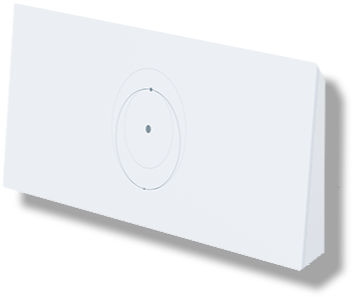Alert Gazette readers will recall my enthusiam for Starlink’s internet service, once we finally got it up and running. That enthusiasm continues unabated — I just now ran a speed test and got 193 Mbps download / 17.4 Mbps upload*, more than enough to run everything in our house and then some.
Of course, leaving well enough alone has never been my modus operandi, so when I received an email describing Starlink’s new WiFi mesh routers, I felt compelled to give them a try.

Now, we already have an Eero mesh system throughout our house, and it seemed to be working fine, so installing another mesh is a “belts and suspenders” kind of strategy. However, our primary movie streaming device had inexplicably begun to drop the Eero connection and switch over to the Starlink base router and we decided to give it what it apparently wants in the form of a stronger WiFi signal. Plus, I was curious about how the Starlink system would perform, and whether it might allow us to do away with the Eero network altogether. So, I made the economically indefensible decision to drop a nickel on two new routers.
Starlink’s plug-and-play designs theoretically make installation of new equipment stupid simple, and I’m just the kind of stupid simple to test that theory. So when the two new routers arrived, I glanced at the instructions, plugged one of them into a kitchen AC outlet, fired up the Starlink app on my phone, and waited for the magic to begin.
I know what you’re thinking…this is where the wheels fall off. You know me all too well. But in this case, the center held, and in less than a minute, the app notified me that a new router was asking to connect to the main router located in our office. I clicked the “pair” button and, well, pairing happened. We had ourselves a new mesh, and the WiFI signal was robust.
It was time to add the second router to the mesh. I plugged this one into an outlet in the den, about eighty feet from the office. And THAT’S when the wheels came off. The app gave the same pairing message but when I tried to pair it, the entire mesh disappeared.
I did some basic troubleshooting and discovered that my phone had switched to the Eero mesh, and I guessed that it should be on the Starlink WiFi in order to successfully configure the mesh. So I switched it back to Starlink, started over, and in a relatively short time (less than ten minutes) had both routers connected to the base station and the mesh operating perfectly.
Our Eero mesh is still activated and working fine, and I think I’m going to leave it in place, as we have a number of devices connected to it and I don’t feel like going to the trouble of switching them to the Starlink network. I worried a bit that the new network would negatively impact the performance of the Eero network (and vice versa) but so far they seem to be playing well together. (For the record, I have the Eero base station hardwired via Ethernet to the primary Starlink router.)
At the end of the day, I’m not sure I accomplished any meaningful upgrades, other than ensuring a stronger and more reliable connection to our primary streaming device — which is not nothing, but also perhaps not worth the cost. But if you don’t already have a WiFi mesh and want to boost your Starlink signal throughout your house, the new mesh routers are definitely worth considering.
*This performance varies through the day. I’ve had speeds of more than 250 Mbps early in the morning, and less than 100 during peak hours, but it’s always enough to stream movies without a hitch. Oh, and in the interest of full disclosure, “just now” took place on May 2. Yes, this is not a real-time report. Sorry.
Discover more from The Fire Ant Gazette
Subscribe to get the latest posts sent to your email.


So I have also been a fan of StarLink since we are out in the country and this is our best internet option. We don’t get speeds more than 90 mbps most of the time but it is always reliable and we can stream what we want without a lot of buffering. Only problem happened this weekend when a major hailstorm bashed in our Gen2 dish. We have the long mount which even had to be added to because of our gutter system and then the cable was threaded though our attic space and in to a home office. So when I started researching about the Gen3 system and having to get new cable and looking at that stationery dish, we opted to go with a “free” replacement of the Gen2 dish although that is going to take some doing to get the old dish down and the new one installed. Meanwhile, we are having to learn to live with one bar of AT&T data plan until the new dish comes in next week. This has shown how dependent I have become on internet—No tv, no computer, and a major act of congress to even get a page printed on the printer.
Debby, I hate to hear that y’all are having to deal with all of that (although the rain that you got is flowing down to us and we do appreciate that!). We can empathize with you, as when we first moved to HSB our best internet speeds were around 20 mbps and 1 bar for AT&T cell service was par for the course. We are all definitely reliant on the internet and wifi for so many things nowadays. Hope you get back online soon!